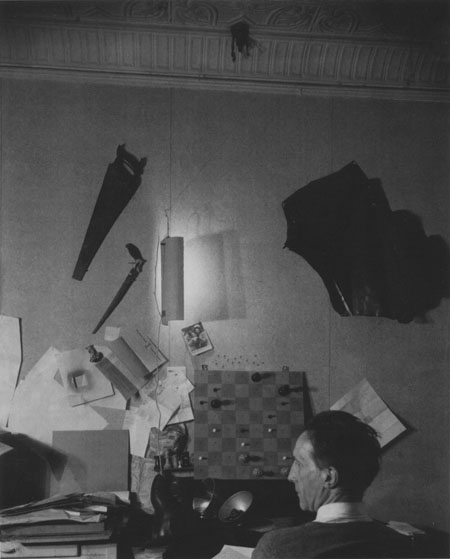- Walter Cronkite interviewed Gertrude Stein in 1935.
- Andy Warhol designed books for New Directions (including Firbank & Fr. Rolfe).
- James Souttar on the relationship between scripts and technology (in particular, the problem of Arabic typesetting) at Limited Language.
- John Dewey stands behind David Foster Wallace’s “Incarnations of Burned Children”.
- A Curious Hieroglyphick Bible; or, Select Passages in the Old and New Testaments at Room 26 Cabinet of Curiosities.
Author Archives: dbv
july 16–july 20
Books
- Joe Meno, The Boy Detective Fails
- Edmund White, The Farewell Symphony
- John Ajvide Lindqvist, Let the Right One In (trans. Ebba Segerberg)
- Paul McDonough & Jane McGriff, editors, Glitch 2
Exhibits
- “Projects 90: Song Dong,” MoMA
- “In & Out of Amsterdam: Art & Project Bulletin, 1968–1989,” MoMA
- “Larry Rivers: 1950s/1960s,” Tibor de Nagy Gallery
- “Tim Hawkinson,” Pace Wildenstein
disclosure
“. . . since in America curiosity counts as a social grace. Tina was highly evasive in answering me, since in Europe satisfying curiosity of my sort counts as a betrayal. Americans serve themselves and their friends up as stories, laced with pathos and spiced with scandal, the dish piping hot on demand. A European discloses himself, if that word can be used to suggest a series of locks opening and shutting, the whole slow and cautious. For an American a confidence is an ice-breaker and we describe our grandmother’s suicide with the same desire to appear amiable that a European employs in commenting on the unseasonably warm weather. We forget what we’ve told to whom, whereas Europeans tremble and go pale when they decide to reveal something personal. In Europe an avowal counts as a precious sign of commitment; in America it maounts to nothing more than a how-do-you-do.”
(Edmund White, The Farewell Symphony, p. 87.)
felipe alfau interviewed by ilan stavans
- Ilan Stavans’s 1993 interview with Felipe Alfau has been dramatized by Amber Reed (as part of the Bring a Weasel and a Pint of Your Own Blood adaptations of Locos), on YouTube; embedding unfortunately disabled.
- And a William Gass review in Harper’s.
noted
- Garth Risk Hallberg on Joseph McElroy’s Women and Men at the LA Times book blog (note also the interview with John O’Brien of the Dalkey Archive there).
- Jacob Silverman on the new ludditism in literature at the VQR blog.
- Plays based on Felipe Alfau’s Locos, very soon in New York.
- Robert Kelly’s “Letter to Thomas Bernhard” at Cerise Press.
- An online variorum edition of Baroness Elsa von Freytag-Loringhoven’s poetry from the University of Maryland.
book i, chapter 5, pp. 112-117
[display_podcast]
july 13–july 15
Books
- Gabriel Josipovici, Everything Passes
- Roberto Bolaño, Amulet (trans. Chris Andrews)
- Kenneth Gangemi, The Interceptor Pilot
- Jessica Abel, La Perdida
- David Mazzucchelli, Asterios Polyp
Films
- Brüno, directed by Larry Charles
- Tony Manero, dir. Pablo Larrain
july 8–july 12
Books
- Francis M. Naumann, Bradley Bailey & Jennifer Shahade, Marcel Duchamp: The Art of Chess
- F. Scott Fitzgerald, This Side of Paradise
- Chloe Aridjis, Book of Clouds
- Noël Vexin, Murder in Montmartre (trans. Jonas Berry & Lawrence G. Blochman)
Exhibits
- “Compass in Hand: Selections from The Judith Rothschild Foundation Contemporary Drawings Collection,” MoMA
- “James Ensor,” MoMA
duchamp/roussel/chess
“In [Percy] Rainford’s original photography, Duchamp is seated at a desk, seen in profile with his face slightly overlapping a chessboard propped up against the wall. The chesmen are attached (glued?) to the board to illustrate the endgame developed by French avant-garde poet and playwright Raymond Roussel, who is considered one of Duchamp’s most important influences. [Frederick] Kiesler’s understanding of the importance of Roussel’s work for Duchamp’s creative process is evidenced by the inscription he added on the reverse of fold-out pages, ‘Marcel D.—born 1887—artiste-inventeur‘ and ‘R. Roussel—born 1877—artiste-inventeur,’ with symbols of the black and white kings positioned respictively nevxt to each name. While Kiesler, who was a keen chess player and frequent opponent of Duchamp, was surely familiar with his friend’s feelings about Roussel, Linda Henderson has suggested that the architect’s clear parallel between these two revolutionaries was drawn ‘undoubtedly with Duchamp’s help.’ At the far end of the flap on the left side of Kiesler’s triptych, the phrase ‘Fous, Cavaliers et Rois‘ (‘Fools, Knights and Kings’) is printed, along with small drawings of a jester and a knight. This was an appropriate use of chess characters on Kiesler’s part to summarize the multi-dimensional careers of Duchamp and Roussel.”
(Bradley Bailey, “Passionate Pastimes,” in Marcel Duchamp: The Art of Chess, p. 77)
chess beats art: the end of the blindman
“We do not have a record of any games played by Duchamp during these early years in New York, but, in Rongwrong, a magazine he edited that came out in only a single issue, he published the transcription of a game played between his friends Henri-Pierre Roché and Francis Picabia. The stakes were high: if Roché won, Picabia would have to stop publishing 391, a journal that had come out in four prior issues; if Picabia won, Roché would have to cease the publication of The Blindman, a review that had appeared only twice. After thirty-four moves in an unorthodox but interesting game, Roché resigned, and Blindman ceased publication.”
(Francis M. Naumann, Marcel Duchamp: The Art of Chess, p. 10.)
